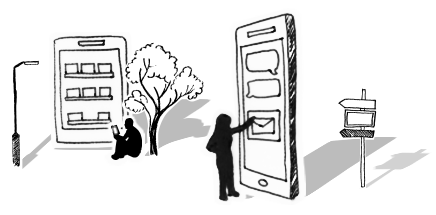




Are Learning Preferences a Part of Your Change Strategy?
Change and learning are very closely linked; personal change involves unlearning old ways of behaving and learning new ones. Despite this, many organisations fail to invest the appropriate amount of time, effort and resources needed in developing a learning strategy for their change initiative. This ultimately leads to a lack of personal change in the behaviour, expectations, requirements and overall buy-in of those who can make the organisational change happen.
Ensuring that your people understand the need for change and have the desire to support it is critical, but this won’t take you all the way in your change journey. Managing successful change means ensuring the knowledge, skills and attitudes of all involved are developed appropriately so that people have the confidence and capability needed to sustain change.
In this article, I’ll draw on my experience delivering learning engagements for our clients to explore three often overlooked learning areas that organisations should consider when creating both their change and learning plans.
Individual learning preferences
People have different preferences and styles when it comes to learning. Whilst some people are visual learners and favour images and symbols in the forms of charts, diagrams, and creative images when learning, others have an aural preference and prefer to listen to information in the forms of lectures, podcasts and conversation. Further to that, whilst some people find reading and note-taking to be highly effective in processing information, others are kinaesthetic learners and best learn through movement, experiments and hands-on activities.
To ensure that that those involved in change are best able to learn and obtain the knowledge and skills required to make the change happen, organisations should seek to discover how their people best process information and learn, and then tailor training materials to account for these learning preferences. This simple task can be achieved through conversation with learners or by conducting a VARK survey, which from a series of questions identifies an individual’s preferred sensory modalities when learning new information. The results allow an organisation to maximise the benefits for both themself and their people going through change.
This approach can accelerate the speed of information processing and skill mastery, alleviate the anxiety that people often experience when being a novice having to learn a new skill and enhance the overall learning and change experience.
Planning for the learning dip
“Although organisations and managers typically expect the productivity impacts of the learning dip, few plan for it.”
Though learning preferences vary from person to person, what does not vary is that when individuals learn a new skill, error rates and the time taken to complete the task tend to temporarily increase whilst job productivity and performance tends to temporarily decrease. This phenomenon is referred to as the ‘learning dip’ and occurs as a result of the increased conscious attention and effort required by learners in order for them to complete a new skill or task.
Learners typically go through four stages when learning a new skill: the learner will initially start off unaware of their lack of a particular skill and be an in unconscious incompetence phase. They will then have realisation of the importance of a skill but will be unable to complete the skill to the desired standard due to lack of knowledge, practice and experience (conscious incompetence). Through deliberate practice and conscious attention and effort, the learner will begin to master the skill (conscious competence) and finally, after a period of practice, the learner will be able to perform the skill effortlessly without much conscious thought (unconscious competence). The two middle stages of conscious incompetence and conscious competence reflect the learning dip.
During any change that will involve people learning a new skill in which they were previously highly competent, a learning dip will occur. However, although organisations and managers typically expect the productivity impacts of the learning dip, few plan for it.
You need to account for the learning dip in both the change plan and learning plan by allowing for activities to take longer and forecasting extra time for completion of these affected tasks. You can offset this by bringing in extra resources to support the team and task completion, ensuring effective training provisions, encouraging learners and acknowledging and celebrating when performance begins to improve. This can significantly reduce the amount of time that learners spend in the learning dip stages, increase the number of individuals achieving skill mastery and speed up the time taken for them to achieve the milestone.
Creating a safe learning environment
To motivate people to make a desired change, it is necessary to create sufficient survival anxiety to destabilise the current situation and drive them forward. At the same time, it is necessary to support people in such a way that they feel safe enough to learn effectively so that their learning anxiety is kept as low as possible.
Learning anxiety is the fear individuals have at the thought of having to try something new for fear that it will be too difficult, that they will look stupid in the attempt or that they will have to part from old habits that have worked for them in the past.
Organisations can reduce the extent to which their people suffer from learning anxiety by creating a safe learning environment that promotes psychological safety, has continuous support and encouragement and offers coaching opportunities so that learners do not feel alone or nervous whilst going through the learning process. A safe learning environment gives people the confidence to try and give their full effort and commitment.
There’s a lot to consider when it comes to creating a strategy that addresses varied learning preferences. But you don’t have to take on this important step alone. Afiniti has an expansive background in helping organisations to achieve their change goals by embedding effective learning strategies. Get in touch and we’d be happy to talk about how we can help you land your change.
To get the latest change tips, advice and guidance directly to your inbox, sign up to our monthly Business Change Digest.

